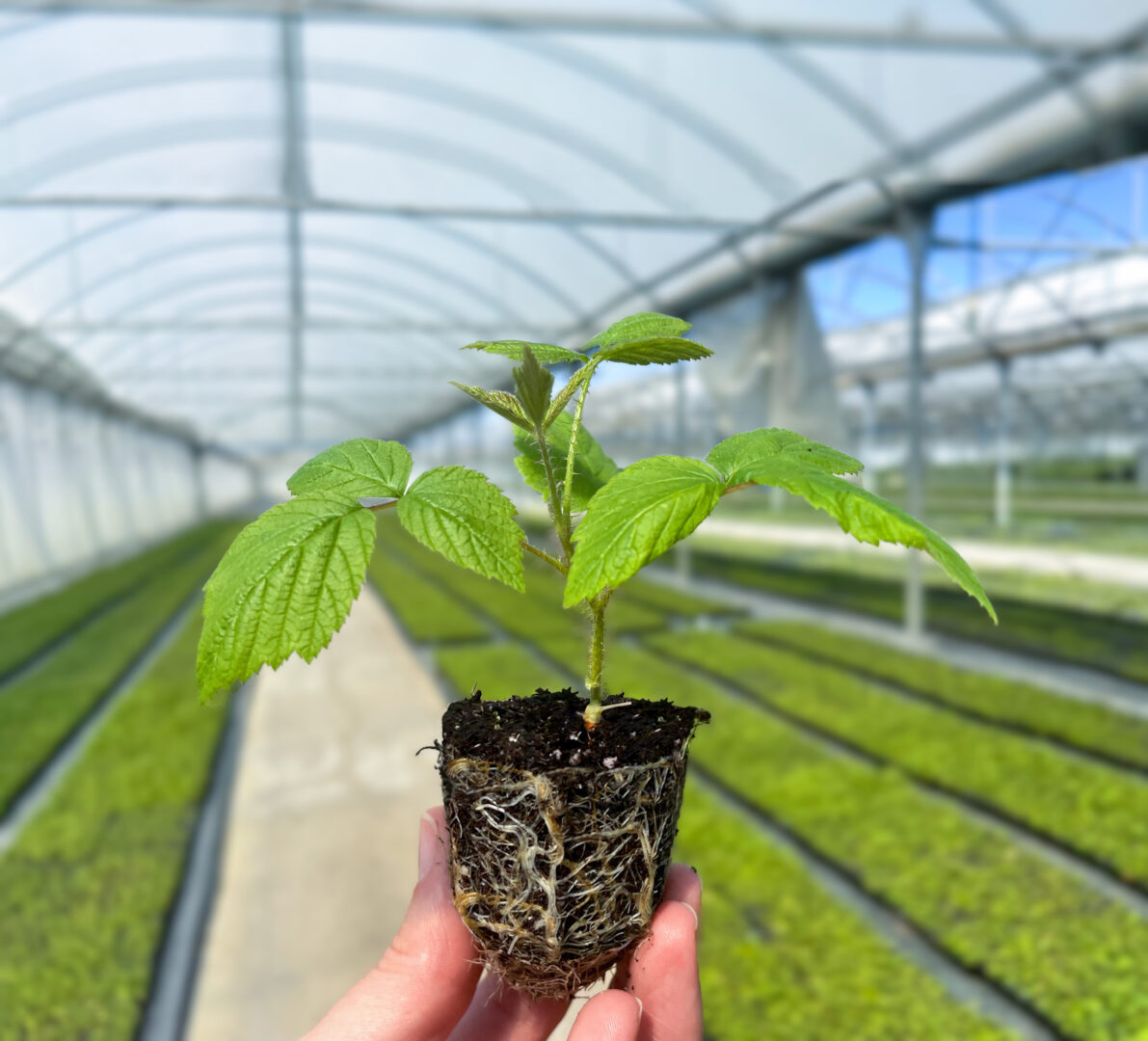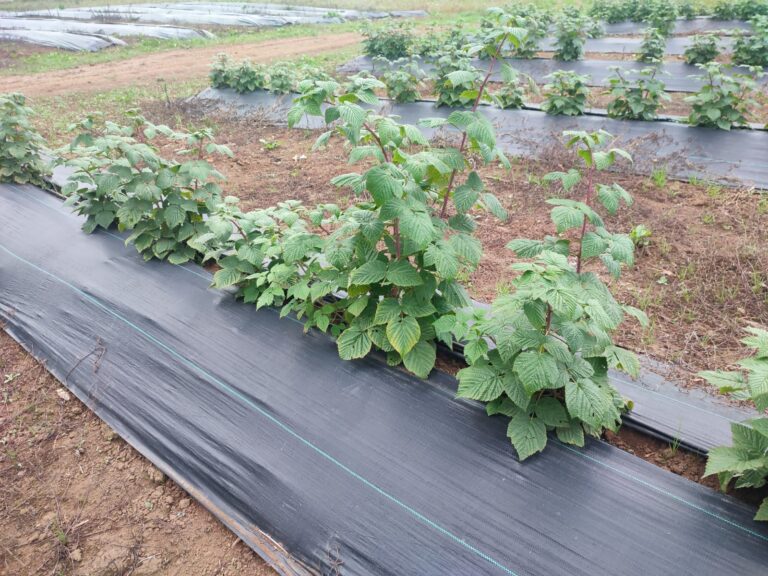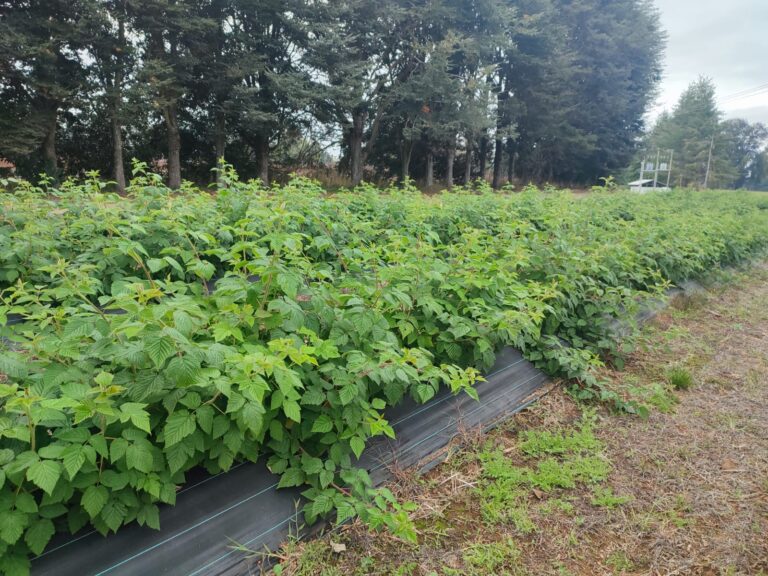Southern Chile Leads New Raspberry Production Projects
The raspberry varieties leading new projects show special adaptation to the colder areas of southern Chile, particularly due to their high chill hour requirements and lower incidence of pests that affect the central zone.
This will result in a greater production of this coveted fruit in the south of our country in the short term.
Traditionally, raspberry production in Chile has been centered in the central zone, from the Maule region to Biobío, where 76% of the production is concentrated. Today, it has moved further south, and there are currently several projects flourishing once again in a colder zone with abundant water and favorable adaptation: the regions of Los Ríos and Los Lagos.
There are several reasons for this shift, but the main ones are the favorable climatic conditions in the area, which result in a lower incidence of Drosophila Suzukii, a small fly pest that was detected in our country in 2017 and has attacked—and continues to attack—a wide range of fruit crops as well as a growing number of wild fruits. This hard-to-control pest affected much of the central zone.
In addition, the decrease in planted hectares of blueberries has led producers to seek alternative crops where they can use the same processing lines. This is the case for raspberries—a fast-growing fruit that, depending on the variety, performs well in colder zones. Over the past 4 years, more than 180 hectares have been planted in the southern zone, and there are several ongoing projects that could add 300 hectares over the next 5 years.

A Shift in Varieties and Mechanized Harvesting
The varietal distribution of this fruit in Chile is approximately 70% of the planted area with Heritage, followed by 10% with Meeker, and 20% with other varieties such as Chilliwack, Amity, and Santas.
“There is currently a significant development in southern Chile with varieties such as Wakefield and Cascade Harvest, which offer better productivity, higher yields per hectare, and are designed for mechanical harvesting. At the same time, there are still projects with the Meeker variety—a variety with more field experience, lower yields per hectare, but very good packaging percentages and also suitable for mechanization,” comments Jorge Rodríguez, Commercial Manager at Agromillora Sur.

Agrícola Santa Carmen has bet on this new alternative. “Most of the projects moving south of Biobío are transitioning to the Meeker and Wakefield varieties. The climate conditions are favorable, and now that plantations are returning to the south, harvesting must be mechanized because there is no available labor. Wakefield was designed for mechanized harvests and high density; its fruit is firm, and in processing it has a better productivity percentage and less loss, which makes it attractive to companies,” says Rodrigo Varela, General Manager of Agrícola Santa Carmen.
In this regard, the case of Cran Chile, which has about 200 hectares of a new variety introduced a few years ago in our country called Wakefield, located in the Lanco area of the Los Ríos Region, is an example of this progress. With a farm 100% dedicated to mechanization, they are optimistic about their initial results. “This year, we will harvest using 20 machines to supply the industry. We believe that Chile and this region have the necessary characteristics to succeed in this project as a strategic supplier for the industry,” says Marcelo Bertín from Cran Chile.
Industry Outlook and Challenges Ahead
For Agrícola Trucao, the raspberry project has been divided into several stages. “We started with the Meeker variety, mainly because we know it and because of its high level of soluble solids (Brix degrees), which in our case is extremely important, since within our group of companies, we belong to Bayas del Sur, dedicated to the production of concentrated juices and freeze-dried powders from various species. Therefore, the Brix degrees are highly relevant for yield when manufacturing these types of products. Moreover, it’s the variety that still leads the frozen (IQF) business, and we believe we have the experience to excel with it. However, within the project, we are going to test other varieties (we are already conducting a Cascade trial) and even other species, always focused on the berry sector,” says Nicolás Díaz, an executive of the company.
In the 2023–2024 season, global raspberry production reached 852,000 tons. Mexico led with 279,000, followed by Poland with 94,000 and the United States with 72,000, while in Chile, the 2023–2024 season reached 16,083 tons of raspberries. 97.30% of Chilean production is destined for the frozen industry, while the rest is used as purée (2.32%), dehydrated (0.06%), and juice (0.33%).




